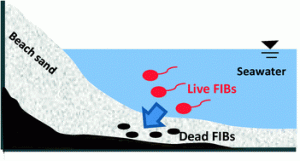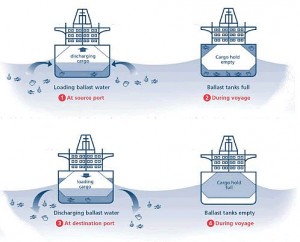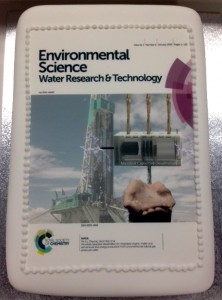Beach sand – not just for sunbathers
After hearing the word “beach”, many people automatically think of sunbathing, long walks near the sea, building sand castles and throwing Frisbees – recreation at its finest. Beaches are one of the most visited ecosystems for human recreation and are of high importance for regional economies, in many cases especially for tourism. Beaches and recreational bathing waters are highlighted by the World Health Organization (WHO) as important for health and wellbeing. But did you know that beaches, and in particular the beach sand itself, also plays a vital part in coastal beach water management?
Worldwide public use of water for recreational purposes and recreational activities that involves water have increased over the years. But this also means that recreational exposure to pathogens in the water environment also increases.
Fecal contamination of coastal waters
There are many different kinds of contaminants that humans can be exposed to with regard to water, such as protozoas and trematodas, bacterias and viruses. Current recreational water management practices tend to focus primarily on the beach water itself, excluding the impacts of beach sand on water quality. A wider approach is needed to fully understand how other components of the beach system can influence the water quality.
 New research by Qian Zhang, Xia He and Tao Yan, from the University of Hawaii at Manoa, studied what role beach sand has in coastal beach water management.
New research by Qian Zhang, Xia He and Tao Yan, from the University of Hawaii at Manoa, studied what role beach sand has in coastal beach water management.
Beach sand is often highlighted for its negative impact because it functions as a potential source and reservoir to fecal indicator bacteria, often showing higher levels than the surrounding water. This could cause chronic water quality deterioration and hamper proper health risk assessment. However, to get full knowledge of the beach system, we also need to understand the positive impacts that beach sand can have on water quality.
By using microcosms, small experimental and simplified ecosystems, Zhang and colleagues have examined how subtidal beach sand can enhance the decay of fecal bacteria and which underlying mechanisms contribute to the process.
Indigenous microbiota – a significant factor in bacterial decay
The study identified that beach sand indigenous microbiota was the major factor in bacterial decay rates, and showed that higher indigenous microbiota corresponded to faster bacterial decay. This research proved that beach sand actively facilitates the removal of fecal bacteria, which goes beyond the traditional perception of beach sand only serving for contaminant adsorption and retention.
The study shows that beach sand have other functions than just being for recreation, it also contributes significantly to water quality. Thanks to the research findings from Zhang and colleagues, beach water management practices can be improved to include beach sand and other functions of natural processes in beach systems, which would be a more inclusive systems approach. This would also enhance our understanding and management of recreational exposure to pathogens in water.
You can read the full paper for free* using the link below:
Impact of indigenous microbiota of subtidal sand on fecal indicator bacteria decay in beach systems: a microcosm study
Qian Zhang, Xia He and Tao Yan.
Environ. Sci: Water Res. Technol., 2015, 1, 306-315.
DOI: 10.1039/c5ew00004a
—————-
Jesper Agrelius is a MSc student in Environmental Science at Linköping University, Sweden. His main interests regards environmental science, especially climate change and biogeochemistry. You can follow him on Twitter @JesperAgrelius.
—————-
*Access is free through a registered RSC account.

































